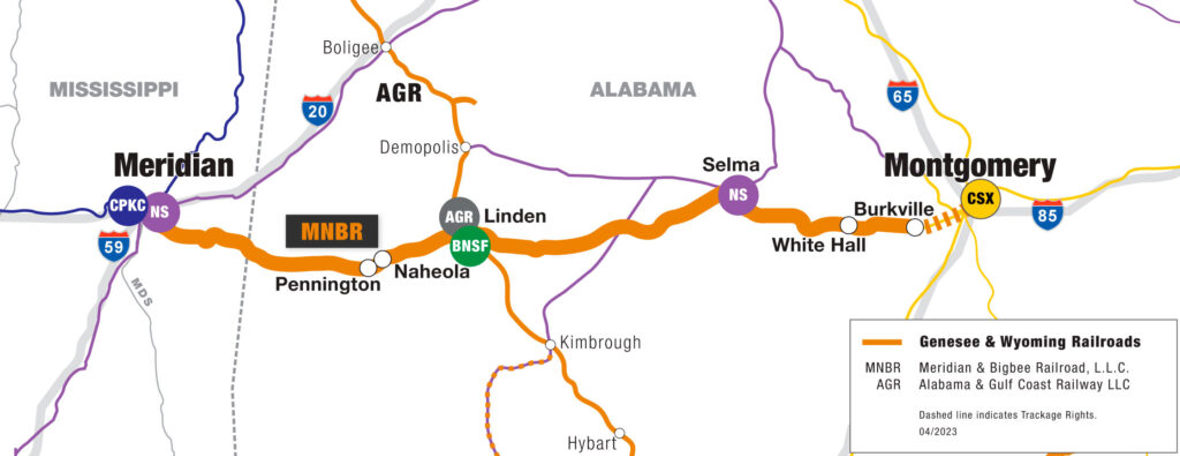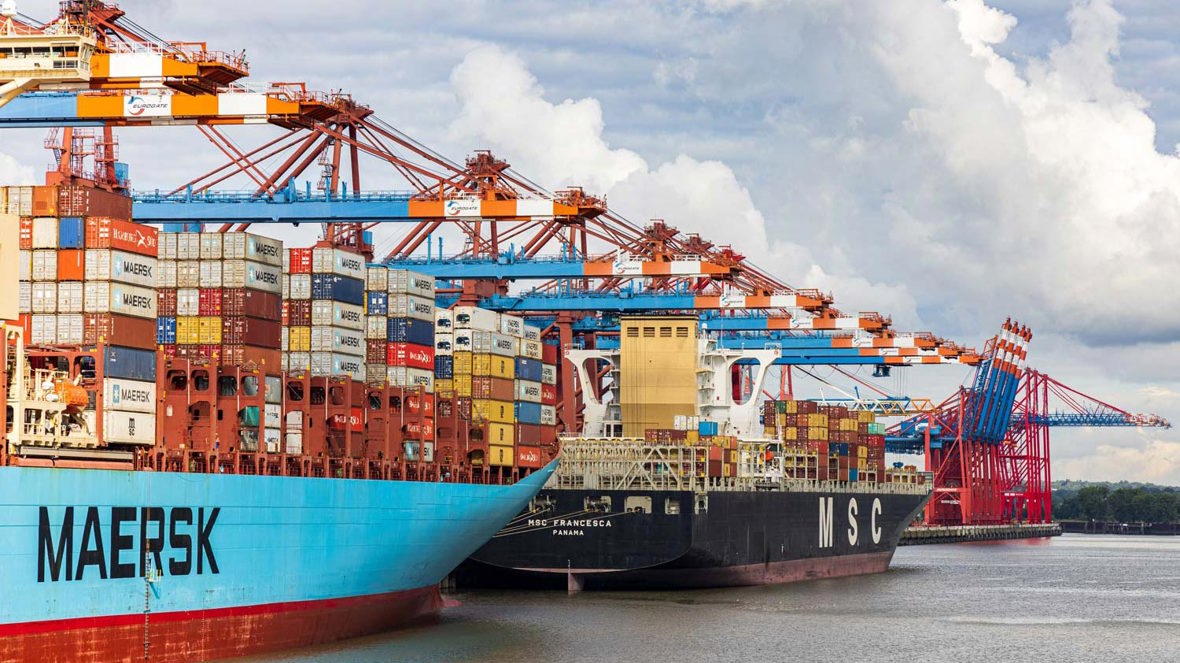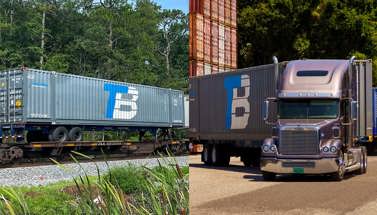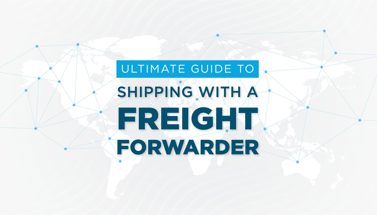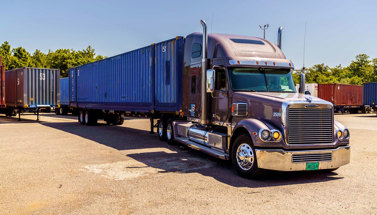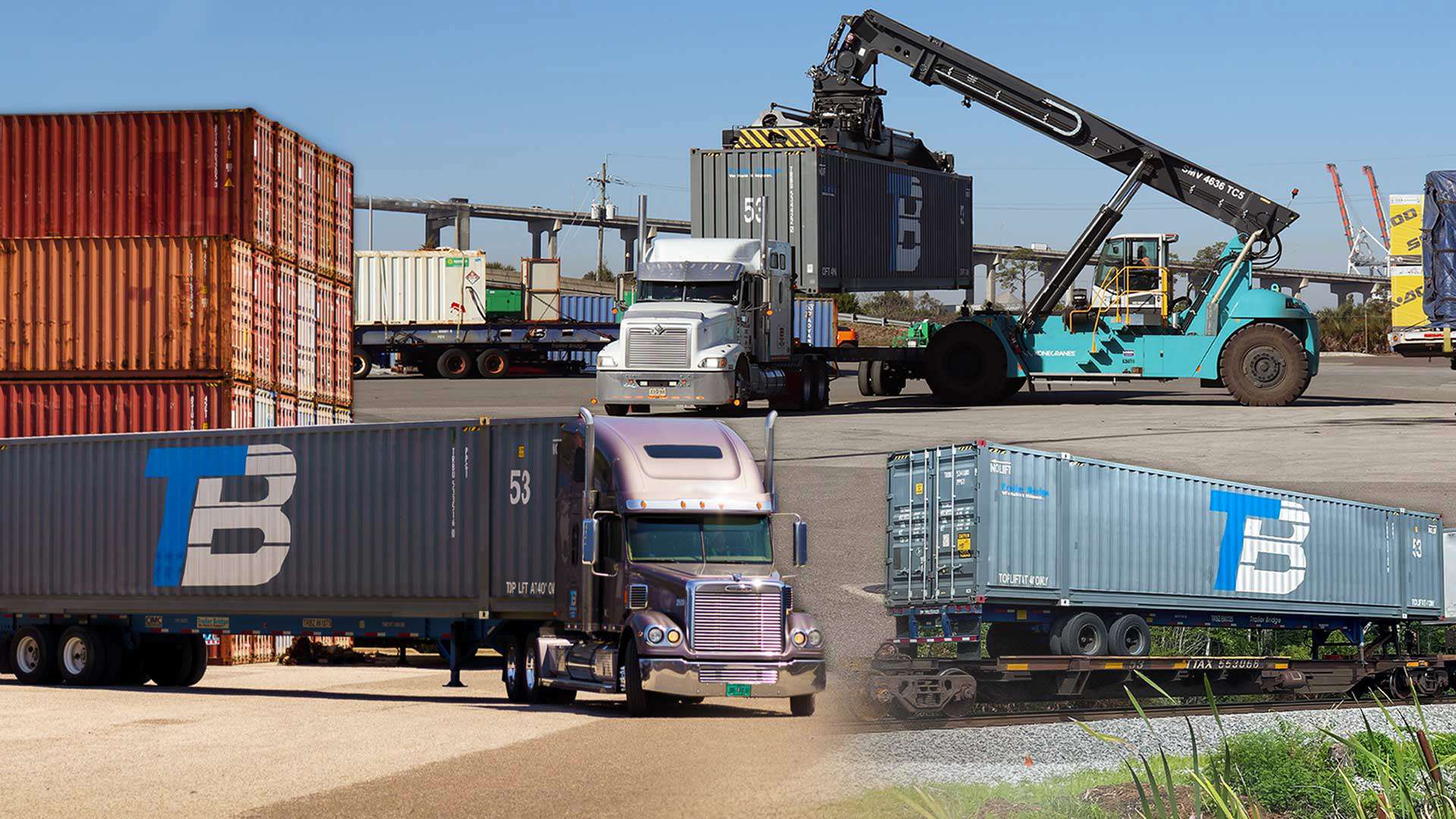
Supply Chain Strategy: Use Carrier Diversity to Avoid Disruption
From the simplest to most complex supply chains, there is always a chance of disruption.
If you aren’t ready for it, an unexpected supply chain disturbance can create a negative domino effect – toppling operations piece by piece as you scramble to hold your business together.
When this happens, the resulting inefficiencies can cause financial strain, product shortages, and negatively impact your reputation.
Since risk is unavoidable, creating a solid supply chain strategy to safeguard your business is important. One approach is carrier diversity – having a trusted set of transportation partners that ensure your business keeps running even if one domino falls.
What is Carrier Diversity
Carrier diversity is a supply chain strategy that involves creating relationships with a range of transportation partners across modes, companies, and geographical locations.
By having a portfolio of partners, you aren’t reliant on any single carrier. This agility makes you more flexible, adverse to risk, and likely to succeed in an ever-changing transportation landscape.
Supply Chain Risk Factors
Disruption can be found in all modes of transportation and is often out of your control. Employing carrier diversity makes it easier for your business to respond to these unexpected interferences.
Here are some of the most common transportation industry risks that could impact your supply chain.
Strike
Whether it is employees of a single company, or an entire union of workers, the threat of strike can slow or completely halt your supply chain if you are relying on a single carrier.
The threat of strike from the UPS Teamsters union is a recent example of the significant impact this type of risk could have on shipping capabilities in the United States. As a major delivery service, it is estimated that UPS delivered 24.3 million packages a day in 2022 and is responsible for up to 30% of shipments in the U.S.
If the strike did happen, it would create an oversaturation of packages that other shipping services like FedEx and USPS wouldn’t have the capacity to handle. So, businesses relying on UPS for transporting their goods would experience major delays or a complete halt in service until the strike ended.
This is what happened during the 1997 UPS strike, when the company had to shut down its delivery service for 16 days. An Inbound Logistics article notes that this historical strike “exposed companies’ reliance on a single carrier for their livelihood” and that many small businesses suffered major losses or had to close their doors as a result. If these businesses had relied on a range of carriers, they could have avoided the disruption by shifting their shipments to these partners while UPS service was disabled.
A similar threat of strike occurred in the rail industry at the end of 2022 and would have shut down railroads across the United States. Not only do railroads move 27.9% of freight in the country, but the strike would have occurred during the holiday season when shippers are historically the busiest.
While strike was narrowly avoided due to government involvement, railroad closure would have been crippling to shippers who relied on intermodal carriers to move their goods, created widespread shortages, and cost the U.S. economy billions of dollars per day.
Mergers, Acquisitions, and Alliances
Business deals like mergers, acquisitions, and alliances in the transportation industry can also create rifts in your supply chain if your exclusive carrier is going through one of these major organizational changes.
While some of these situations could be beneficial, you should be prepared for the possibility that your carrier’s service will change drastically or be absorbed completely.
Having other carriers to fall back on means there is less strain on your business if one of your transportation partners is affected by these deals.
In March of 2023, the Surface Transportation Board approved a merger between Kansas City Southern and Canadian Pacific Railroads, which will create a direct connection between the United States, Canada, and Mexico.
While this connection will create convenience for intermodal shippers doing business across North American borders, it is the first rail merger to be approved in 20 years due to concerns surrounding major service disruptions that resulted from similar infrastructure changes in the past.
The Southern Pacific-Union Pacific merger in 1996 is an example of these negative impacts. When their deal went through, resulting issues included “congested rail yards, late shipments, missing rail cars, neglected customers, and overall poor service.”
Railroad companies Canadian Pacific Kansas City and CSX recently announced that they will be creating an interchange connection in Alabama so that they can offer direct transportation between Mexico, Texas, and the U.S. Southeast. This new interchange includes the two Class I railroad companies partially acquiring or operating parts of Class III railroad Meridian and Bigbee, which runs between Mississippi and Alabama.
While the deal allows Meridian and Bigbee to continue serving their existing customers, the impact on these customers is yet to be seen. Since the new interchange means that local customers will be sharing tracks with two much larger rail services, these customers may experience delays or service changes as the adjustment is made.
Ocean shippers will be impacted by the end of the 2M Alliance, which has allowed Maersk and MSC to combine resources in the form of vessel sharing and cargo pooling since 2015.
While the end of the alliance in 2025 will encourage more competitive pricing, current customers will no longer have the flexibility and capacity access that they did when the two companies were working together.
For shippers that rely on the benefits of 2M alliance for their transportation needs, the divide of the two companies in 2025 could cut down service options unless they diversify their carrier network.
Nearshoring
Nearshoring is one of the newest strategies that companies are leveraging in their supply chain, with Forbes calling it the “next big thing in global market.”
Nearshoring is when companies move their manufacturing efforts to countries closer to their primary operating location to minimize the chance of supply chain disruption.
The disruption in the global supply chain, and the resulting shortages during the Covid-19 pandemic caused businesses to seek production solutions closer to home. For many businesses in the United States, this means moving production facilities from Asia to Mexico.
This move is a positive one since it means companies can benefit from decreased chances of supply chain delays, more streamlined and tariff free international shipping due to the USMCA (United States-Mexico Trade Agreement) and decreased reliance on one manufacturer.
However, this major geographical shift means rebuilding your supply chain in a different country. If you only have relationships with carriers that serve your shipping lanes between Asia and the U.S., you will be at a disadvantage when your new operations require carriers in Mexico.
How Carrier Diversity Strengthens Your Supply Chain Strategy
As you can see, the logistics industry is constantly changing and introducing unknowns that can greatly impact the success of your business. While the risks mentioned span multiple areas of the supply chain, reliable transportation for your cargo is a component that you will always need to succeed. This is why adding carrier diversity to your strategy is one of the best ways to protect yourself from unknowns and future-proof your business.
These are some of the top benefits of carrier diversity:
Risk Mitigation
There is a reason that “don’t put your eggs all in one basket” is a cliché. Like you diversify your stock portfolio to limit risk for your assets, diversifying your carrier mix reduces risk to your business. Apart from the industry-related disruptions above, shippers are also vulnerable to their service being impacted by:
- Geopolitical Issues: War, changes in trade policy, natural disasters, and pandemics can limit or halt carrier service in certain locations.
- Economic Changes: Rising prices, recession, or market downturns can cause carriers to make layoffs or declare bankruptcy.
- Capacity Limitations: High demand or equipment shortages can mean carriers have limited or no capacity to move your cargo.
If your only carrier succumbs to one of these issues, it can be detrimental to your business as you scramble to rebuild your supply chain in their absence. But having multiple options allows you to simply transfer your freight to another transportation provider if your original carrier is out of commission.
Flexibility
Having multiple transportation partners means that your business isn’t held back by a single carrier’s limitations. This can come in handy when:
- You occasionally need to move cargo with specialized requirements or new lanes.
- Your shipping needs expand beyond the scope of what a single carrier can handle.
- Your business is growing into multiple geographic areas, and you need carriers to serve each location.
With multiple carriers, you can be more confident that your needs will be met now and in the future. It also means that you will have more options as far as capacity and shipping lanes so you can build your supply chain around your schedule.
Cost Optimization
Comparison shopping applies to freight carriers too! If you use the same carrier all the time, there is no way to know if you are getting the best rate for the service. Requesting quotes from multiple carriers means you can compare prices and gives you more negotiating power.
Knowing what is offered from carriers at different price points, you can make more informed decisions about what to budget for your transportation needs. You may even be able to cut down on costs so you can allocate funds more effectively to grow your business.
How to Create Carrier Diversity in Your Supply Chain
Creating carrier diversity in your supply chain is more than just choosing multiple transportation providers to work with. Here are some tips for creating a combination of carriers that will best serve your business’s needs.
Build Relationships Across Multiple Modes of Transportation
There are many ways to move freight – over-the-road trucking, intermodal, ocean and air. Each of these methods have their own pros and cons depending on what you are shipping, the distance it will be traveling, and how fast it needs to arrive.
For example, when shipping freight domestically, intermodal can be less expensive for distances over 500 miles, but trucking is more flexible and will usually arrive more quickly.
When shipping international freight, ocean is usually more cost effective, bur air is much faster and sometimes necessary when moving fragile goods.
Having carriers that offer each of these modes provides you with more flexibility when deciding how to ship your cargo. Even if you have a preferred mode for most of your shipments, having relationships with other providers can help when unexpected circumstances arise.
Use Both the Contract and Spot Market
The contract and spot markets are two of the most common ways to secure shipping capacity for your freight. Using both gives you access to different carriers based on the situation and your shipping needs.
Contract freight provides a predictable rate for goods that are shipped over the same lanes on a regular basis. To secure a contract rate, you must promise a consistent volume to the carrier for an extended amount of time. Typically, shippers form closer relationships to the carriers they have contracts with because of the repeat service.
Spot freight is for irregular or one-off loads that need to be moved over a single lane. A quote is requested from the carrier for their services, and they are paid a one-time price for that single load. While you may not have a long-standing relationship with a carrier from the spot market, it shouldn’t be discounted as an option. The spot market provides access to capacity that your business needs to keep moving when your typical carrier can’t.
Have Carriers in Different Geographical Locations
Having carriers in different areas around the country (or world) allows you to take advantage of business opportunities and ensures your supply chain continues despite any location-specific obstacles. Some specific benefits include:
- Reducing transportation costs by using carriers located near manufacturing facilities or delivery locations.
- Having a transportation network ready if your business plans on expanding into new geographic territory.
- Bypassing shipping delays due to severe weather, natural disaster, or other unsafe conditions that may put regional carriers out of commission.
Use a Logistics Partner Like a Broker or Freight Forwarder
If you would prefer to have a single point of contact for your transportation needs that already has established relationships with numerous carriers, then working with a broker or freight forwarder will provide these resources.
Their expertise can help you quickly establish a carrier strategy that is right for your business, whether you are shipping locally, nationally, or globally. Most third-party logistics services have access to carriers from multiple transportation modes like domestic trucking, intermodal, ocean, and air.
And since they work with multiple carriers, they aren’t limited to the asset capacity of any single company. But brokers don’t just provide a convenient “one-stop shopping” experience. They also save you the time and resources by qualifying and maintaining carrier relationships themselves.
Freight brokers and forwarders are immersed in the transportation industry every day, making them more likely to become aware of shipping risks sooner and can help you proactively avoid supply chain disruption.
Carrier Diversity Keeps Your Supply Chain Moving
When your business depends on steady shipping services to keep operations running, relying on a single carrier can be a fatal mistake.
To build your carrier base, start with our tips:
- Create relationships across multiple modes of transportation
- Use both the contract and spot market
- Have carriers in different geographical locations
- Work with a broker or freight forwarder
Unfortunately, risk in business is unavoidable. But including carrier diversity as part of your supply chain strategy provides options that make you more resilient in a highly volatile industry and world.

